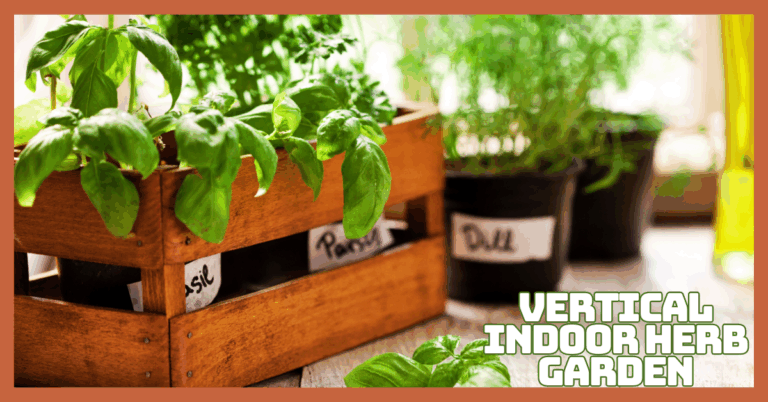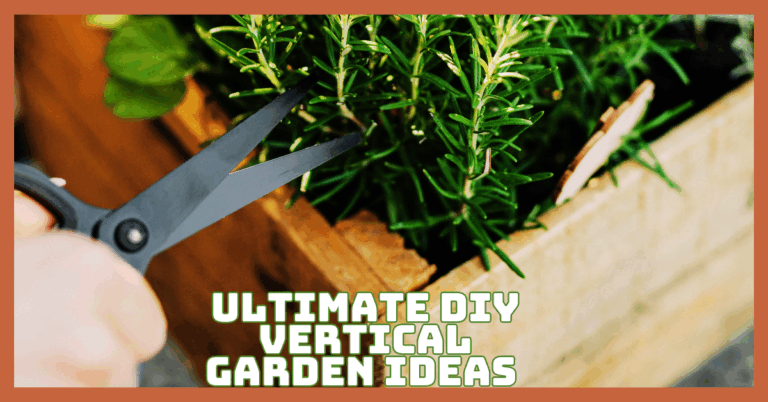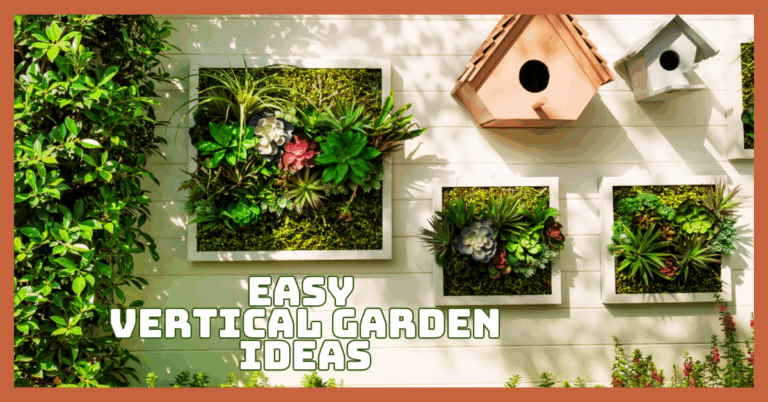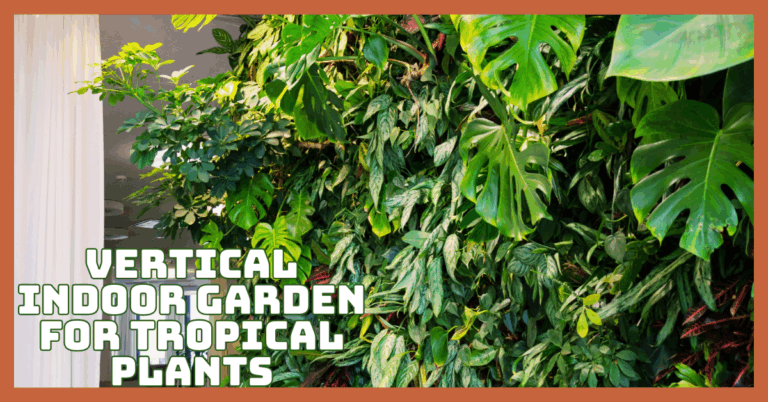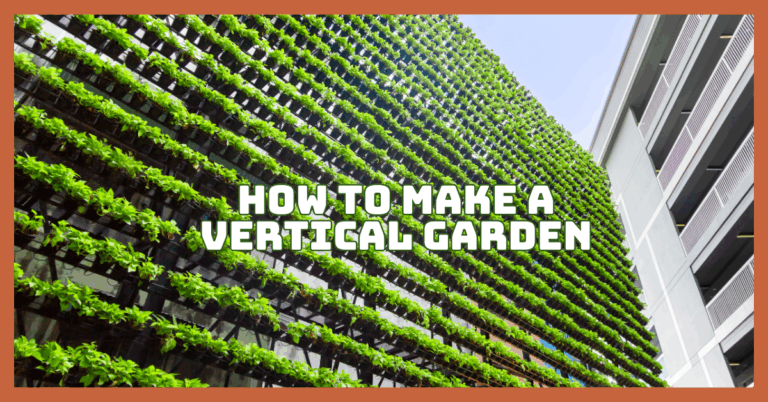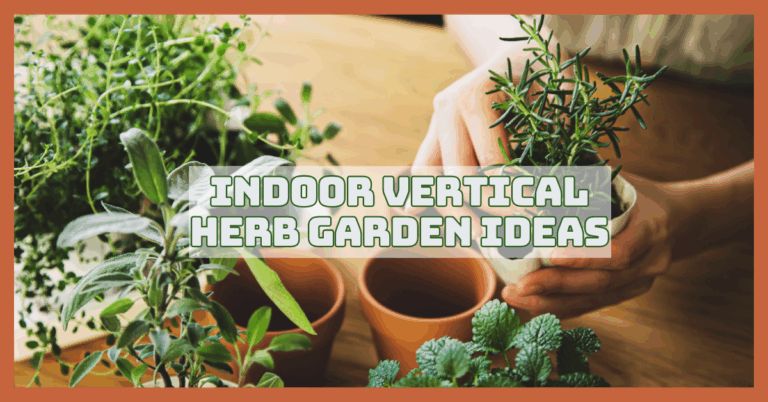Create A Stunning Vertical Garden For Vegetables
Dreaming of a lush vegetable garden but tight on space? A vertical garden for vegetables might be your perfect solution!
Growing upward instead of outward, you can transform balconies, patios, or bare walls into thriving, productive green spaces.
For urban gardeners and limited-space residents who desire fresh, homegrown produce without requiring a backyard, this article will help you create a beautiful vertical vegetable garden in a short space.
What Is A Vertical Vegetable Garden?
A vertical vegetable garden is an innovative, space-saving gardening method where vegetables grow upward on structures instead of spreading across the ground.
Think of it as gardening with a twist—climbing up rather than sprawling out! Whether you use trellises, wall planters, hanging baskets, or stacked containers, the goal is to make the most of vertical space, which is especially helpful in small homes, balconies, patios, or rooftops.
This technique is not only practical but also visually appealing. Imagine a wall covered in vibrant greens, juicy tomatoes, or crisp cucumbers—it’s like living art you can eat!
Vertical gardening reduces weeding, improves air circulation, and leads to healthier plants and higher yields. It also makes watering and harvesting easier since plants are at eye level.
Many vegetables thrive in vertical setups, from leafy greens and herbs to pole beans and cherry tomatoes. Whether you’re a city dweller or just looking to tidy up your gardening space, a vertical vegetable garden is a beautiful and efficient way to grow your food.
Benefits Of Vertical Gardens For Vegetables
Vertical gardening transforms small spaces into productive vegetable havens. It saves space, boosts yields, and offers practical, eco-friendly benefits—perfect for urban gardeners and anyone wanting homegrown produce.
1. Saves Space
Vertical gardening is perfect for compact areas like balconies, patios, and rooftops. Instead of spreading plants across the ground, you grow them upward using shelves, trellises, or wall planters. This maximizes available space, producing various vegetables even in the smallest areas.
2. Easier Maintenance
With vertical gardens, vegetables are elevated, making tasks like running and elevating vegetables easier. You won't need to crouch, kneel, or strain your back. This ergonomic benefit is invaluable for seniors, people with mobility issues, or those with less physical activity.
3. Higher Yields In Small Areas
Vertical gardening allows you to grow more crops per square foot using vertical layers and trellised growth. Vining vegetables include cucumbers and tomatoes.
You flourish in such systems and can grow upwards instead of outwards, making your limited gardening area more productive and rewarding.
4. Improved Soil Management
Vertical gardens often use pots or containers, giving you complete control over soil quality. You can customize soil for specific vegetables, improve drainage, and reduce the chance of weeds or soil-borne diseases. This results in healthier roots and more productive plants with fewer maintenance concerns.
5. Water Efficiency
Vertical gardens can be designed with drip irrigation systems or self-watering containers, ensuring water reaches the roots directly.
This reduces water waste, prevents overwatering, and lowers evaporation. The result is a more efficient watering process that supports healthy growth while conserving valuable water resources.
6. Reduced Pest Problems
Elevating your vegetables helps keep them out of reach of common ground pests like slugs, snails, and some insects. With fewer pest problems, your vegetables have a better chance to thrive naturally, minimizing the need for chemical pesticides or constant pest monitoring.
7. Maximizes Urban Gardening Potential
Vertical gardening opens new possibilities for city dwellers with limited or no yard space. You can grow fresh vegetables in your kitchen windows. In any case, it enables everyone to profit from homegrown goods in an environmentally responsible manner.
Vertical Gardening Structures And Ideas
A vertical garden for vegetables is an innovative way to maximize space while growing fresh produce in small or urban environments.
These structures support healthy plant growth and add visual interest to your garden. Below are some popular vertical gardening structures and ideas to help you design a thriving vegetable garden, even in the tightest spaces.
1. Trellises
Trellises are a classic vertical gardening structure ideal for vining vegetables such as peas, beans, cucumbers, squash, and melons.
When setting up a trellis, use sturdy materials like metal or wood and position it in a spot that receives full sunlight, at least 6–8 hours a day. Sow or plant seedlings at the base and guide tendrils up the structure.
Trellises improve airflow around plants, reducing fungal diseases. Use soft ties or garden clips to support growing vines. Zones 3–10 are suitable for most trellis-friendly vegetables, with earlier planting in warmer zones. To hold onto moisture, keep the soil moist and mulch it.
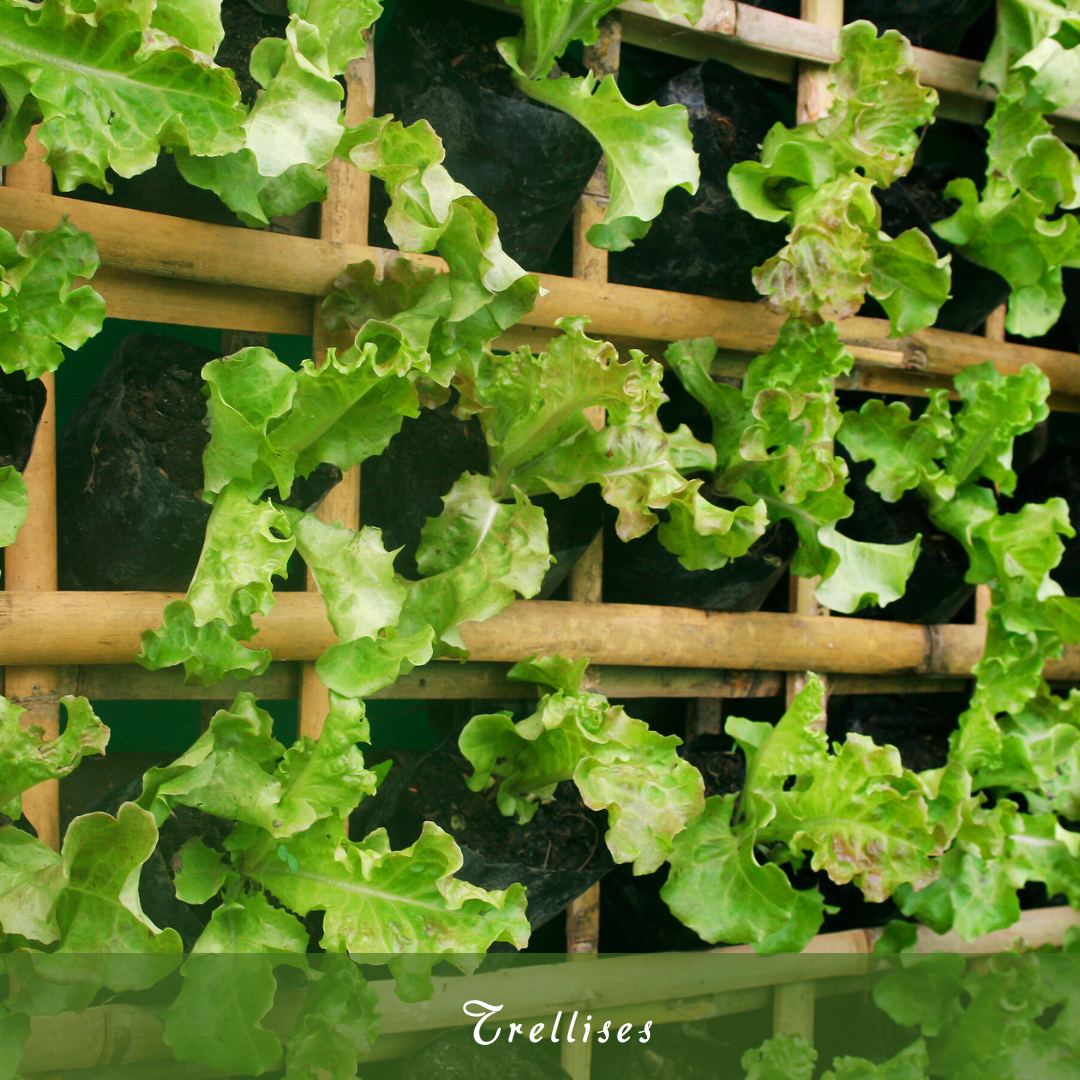
2. Wall Planters
Wall planters are excellent for growing herbs, leafy greens, and strawberries in small spaces. These vertical structures can be made from fabric pockets, modular plastic systems, or mounted containers. Ideal vegetables include spinach, arugula, lettuce, and herbs like basil, cilantro, and parsley.
Use a lightweight, well-draining potting mix and water frequently, as wall planters dry out faster. South or west-facing walls work best for sun-loving plants.
In Zones 4–10, you can grow multiple seasonal crops. Regular feeding with diluted organic fertilizer helps sustain growth. Ensure good drainage and secure mounting to prevent tipping or damage from wind.
3. Hanging Baskets
Hanging baskets are perfect for growing cherry tomatoes, dwarf peppers, lettuce, and herbs like thyme or oregano. Choose baskets with coconut coir or plastic liners and add high-quality potting mix enriched with compost.
Position them in areas with 6+ hours of sunlight daily. In Zones 4–11, hanging baskets offer flexibility in positioning and mobility.
Water daily during summer, and ensure drainage holes are present. For better yield, choose compact or trailing varieties.
Rotate baskets occasionally for even sun exposure. Fertilize biweekly with a balanced liquid fertilizer, and trim spent leaves to encourage new growth and maintain an attractive display.
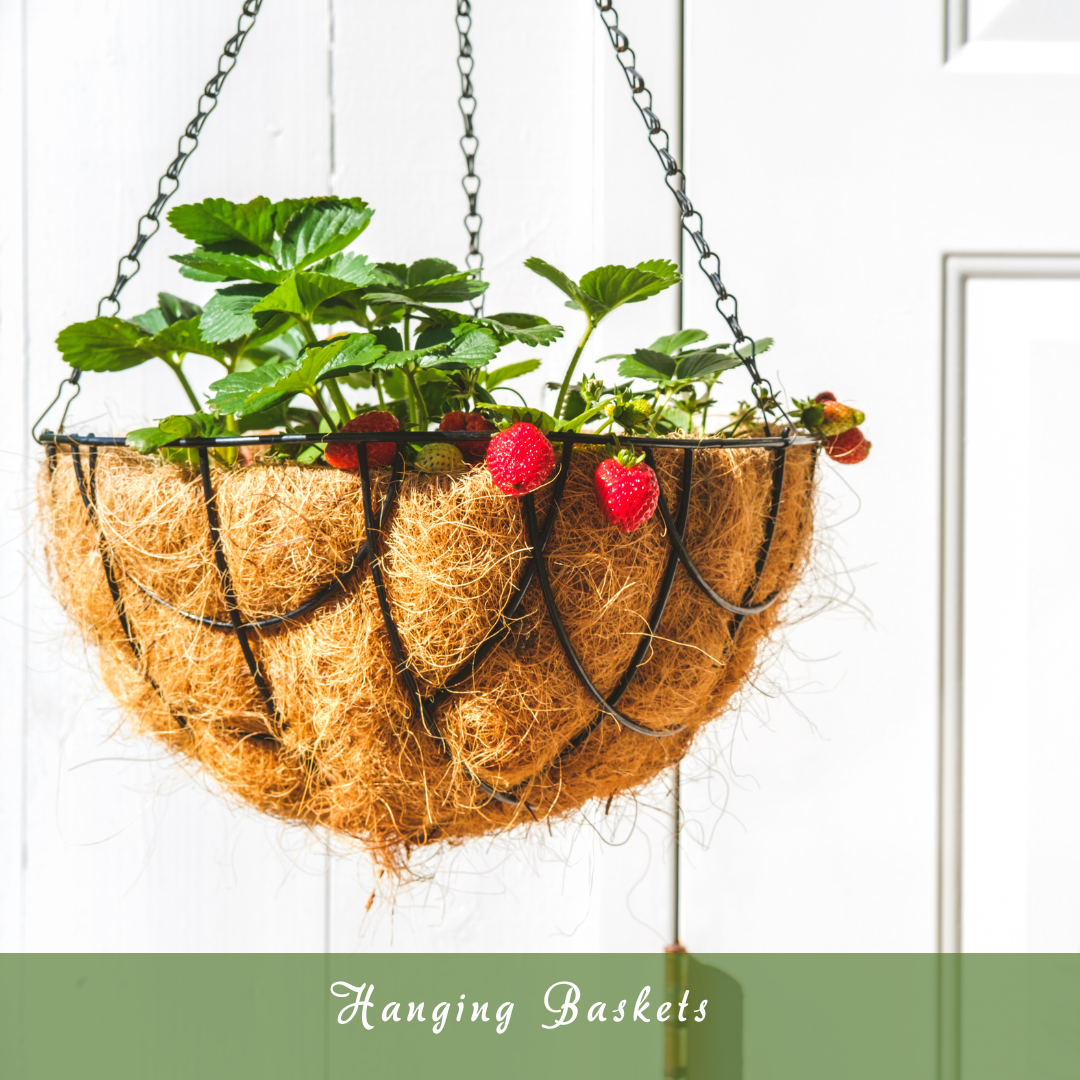
4. Green Walls (Living Walls)
A vertical garden for vegetables, like green walls, provides an efficient way to grow leafy greens and herbs in small spaces while enhancing the aesthetic of your environment.
These vertical systems typically use modular panels or felt pockets with integrated irrigation. They’re best suited for Zones 5–10 and require a location with at least 4–6 hours of indirect or filtered light. Install a drip irrigation system that runs automatically to provide steady moisture.
Use lightweight, moisture-retentive soil blends. Because root space is limited, choose fast-growing, shallow-rooted plants.
Harvest regularly to keep plants compact and productive. Prune dead leaves and monitor for pests hiding in the dense foliage.
Turn Your Passion for Nature Into Income
🌿 Whether you love gardening, caring for animals, or exploring holistic living,
You can share your knowledge online and earn from it.
Discover how nature lovers are growing their passions into meaningful, income-generating blogs. 👇
5. Pallet Gardens
Pallet gardens are an easy DIY vertical structure made from recycled wood, great for growing herbs, lettuce, radishes, and spinach.
Lay the pallet flat, staple landscaping fabric to the back and bottom, and fill with quality potting soil. Plant seedlings or seeds into the slats and stand the pallet upright. Water carefully to avoid runoff and ensure even moisture.
This method is suitable for Zones 3–10, with seasonal variation depending on the crop. Place the pallet in a location that is partial to full sun. Regularly check for wood rot or pests. Great for balconies, patios, or fence-mounted setups.
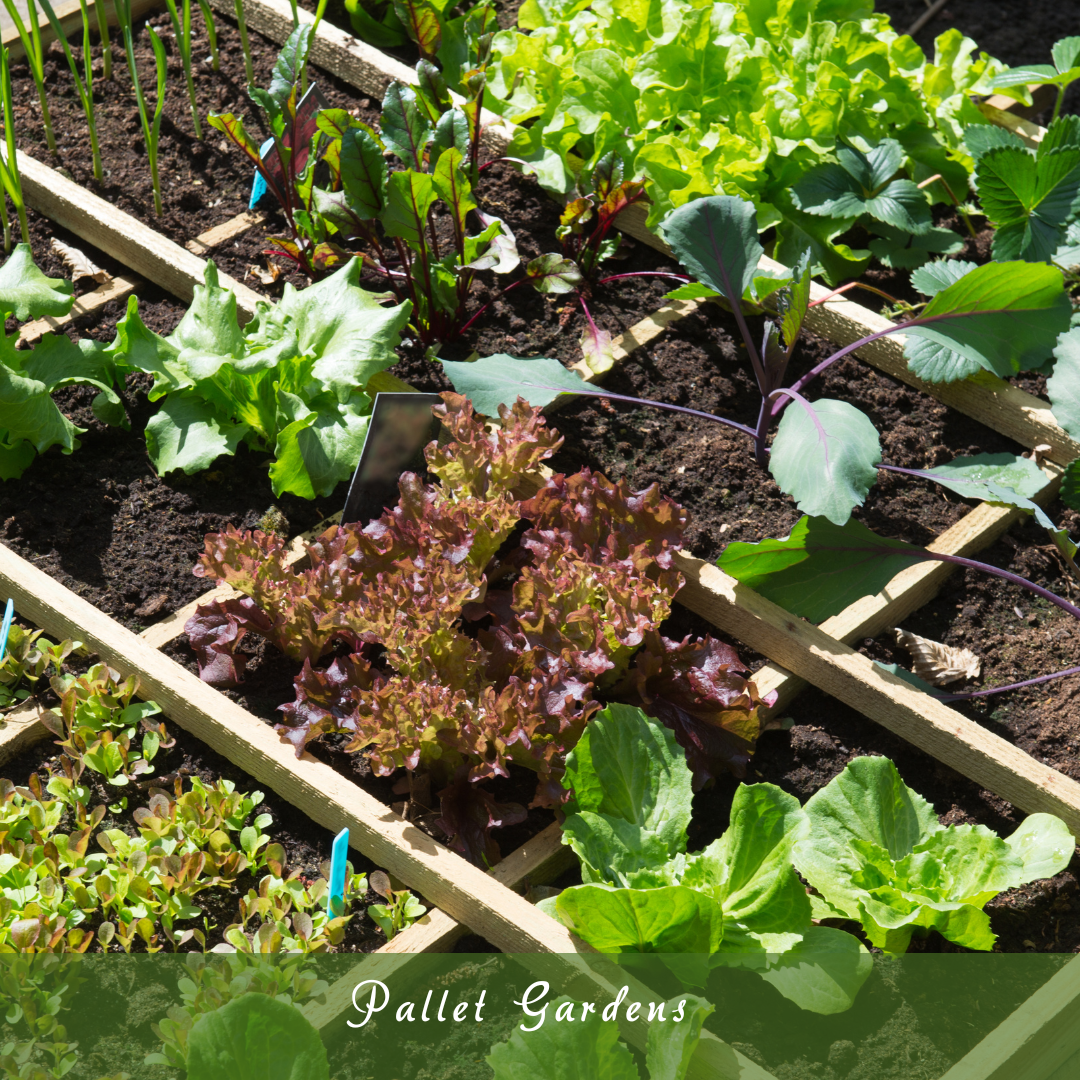
6. PVC Pipe Towers
PVC pipe towers are clever vertical planters for strawberries, lettuce, and leafy greens. Drill evenly spaced holes in a wide PVC pipe, fill it with lightweight potting soil, and insert plants into the holes.
Secure the pipe vertically using a base or wall mount. Best for Zones 4–10, they save space and create an eye-catching display.
Ensure consistent watering, as soil in these towers can dry quickly—consider a central watering tube with small holes. Rotate occasionally for even growth. Use compact or trailing plant varieties and monitor for slugs and insects that might hide in shaded areas.
7. Gutter Gardens
Reused rain gutters mounted on fences or walls make excellent planters for shallow-rooted crops like lettuce, radishes, and arugula.
Drill drainage holes, fill with a lightweight soil mix, and plant directly into the gutter. Gutter gardens are ideal for Zones 3–9 and work well in sunny or partially shaded areas. They’re especially suited for spring and fall crops.
Water frequently due to the shallow depth; add mulch to retain moisture. Use supports to prevent sagging. This method is eco-friendly and functional, perfect for patios or compact outdoor spaces. Fertilize every few weeks with diluted organic feed.
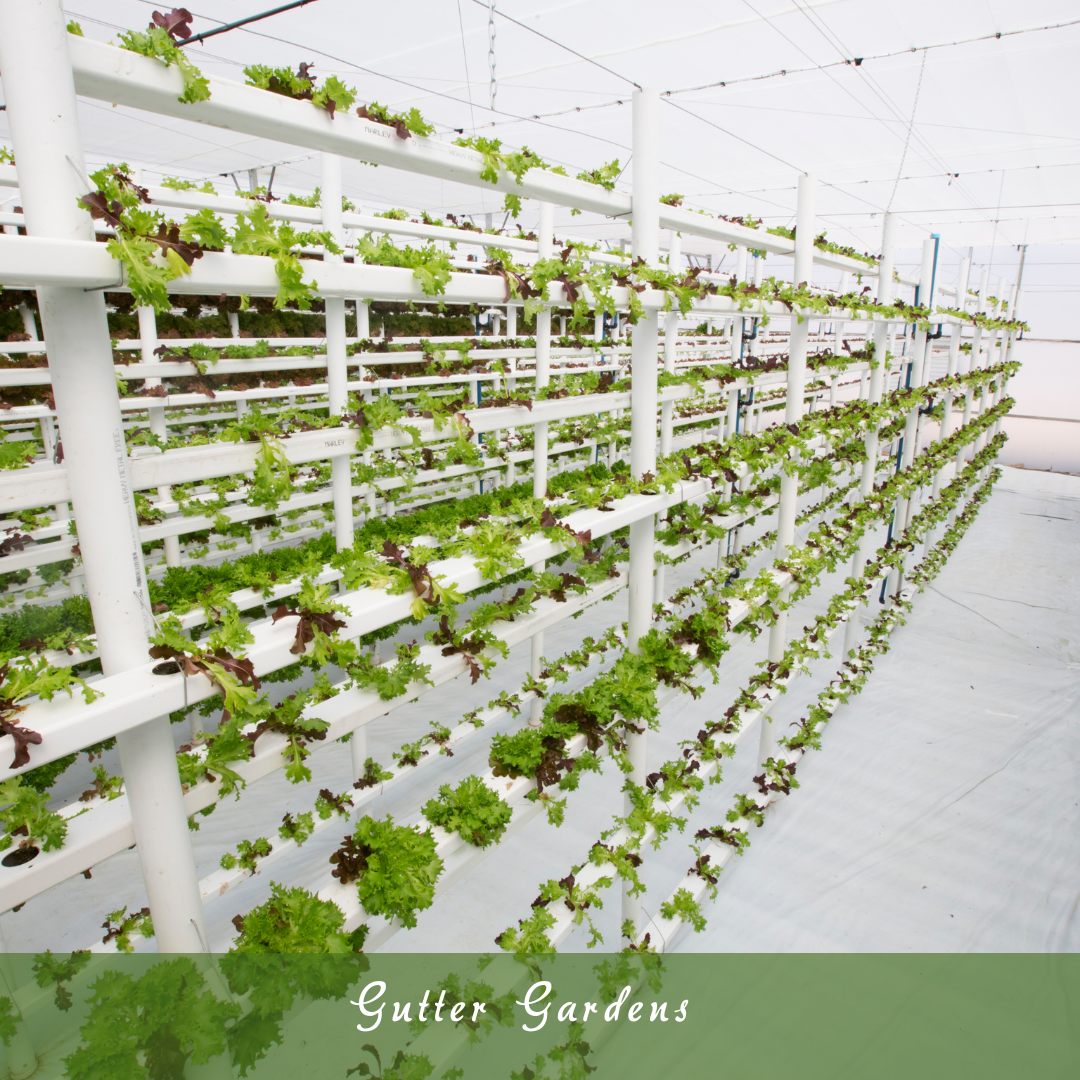
8. Arbours & Arches
An arbour or arch is a fantastic addition to a vertical garden for vegetables, offering structure and support for climbing crops like beans, grapes, and squash.
Made from wood or metal, these structures need to be placed where plants receive 6–8 hours of direct sunlight. Ideal for Zones 4–9, they provide a dramatic and productive vertical solution. Plant crops at the base and train vines using soft ties or clips.
Keep the soil consistently moist and apply mulch around the base. Regular pruning ensures healthy growth and prevents overcrowding. These structures also help improve air circulation, reducing the risk of fungal issues.
9. Tiered Planters
Tiered planters offer multiple levels for growing compact vegetables such as lettuce, carrots, chard, and herbs. Typically made of stacked wood, metal, or plastic frames, they allow efficient water drainage from top to bottom. Best suited for Zones 3–10, they maximize space in small gardens.
Plants that prefer the sun should be put at the top, and those that can withstand shade should be put at the bottom. Use high-quality soil and water regularly.
Fertilize monthly with an organic blend. These planters make harvesting easier and reduce soil compaction. They’re great for patios, porches, or entryways and can be moved indoors during colder seasons.
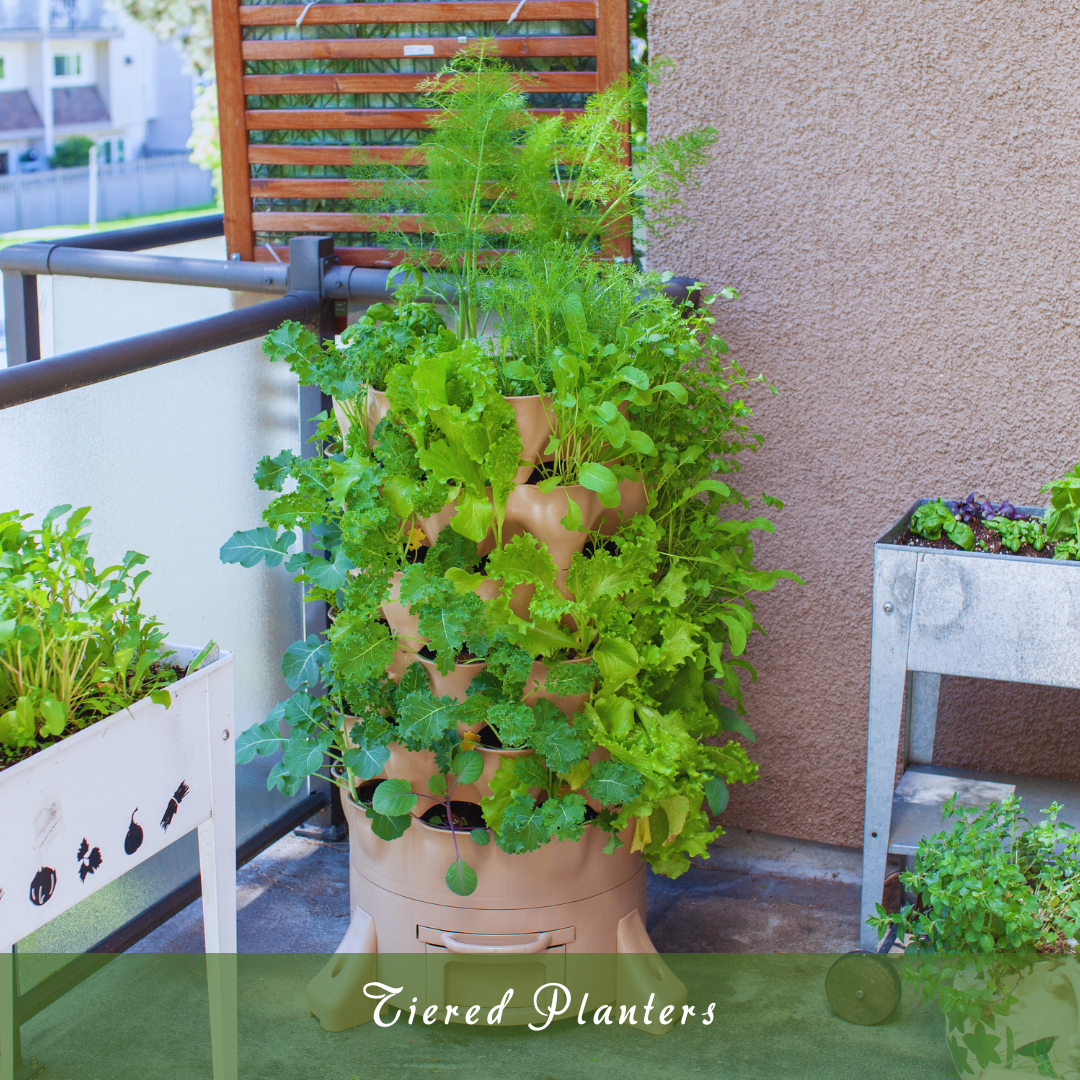
10. Hanging Bottle Gardens
Recycled plastic bottles make an innovative and eco-friendly option for a vertical garden for vegetables, providing a creative way to grow herbs and small plants while reducing waste. Cut openings into bottles, add drainage holes, and string them vertically along a wall or frame.
Fill with potting soil and plant seedlings. Best for Zones 4–10, this eco-conscious setup is excellent for kids and beginners.
Water sparingly to avoid overflow and fertilize lightly. Use compact plants to prevent overcrowding. Position in partial to full sun, and rotate for even growth. This creative method helps reduce plastic waste and adds a unique look to vertical garden spaces.
11. Shoe Organizer Garden
A canvas shoe organizer hung on a fence or wall can be transformed into a compact vertical herb or greens garden. Fill each pocket with quality potting mix and plant herbs like thyme, parsley, basil, or greens like spinach.
Perfect for Zones 4–10, this method is best for small areas or balcony gardening. Ensure the wall receives at least 4–6 hours of sunlight.
Water frequently, as pockets dry quickly, and fertilize monthly. Make sure there’s proper drainage to avoid waterlogging. It’s a fun, budget-friendly way to start vertical gardening, especially for renters or beginners.
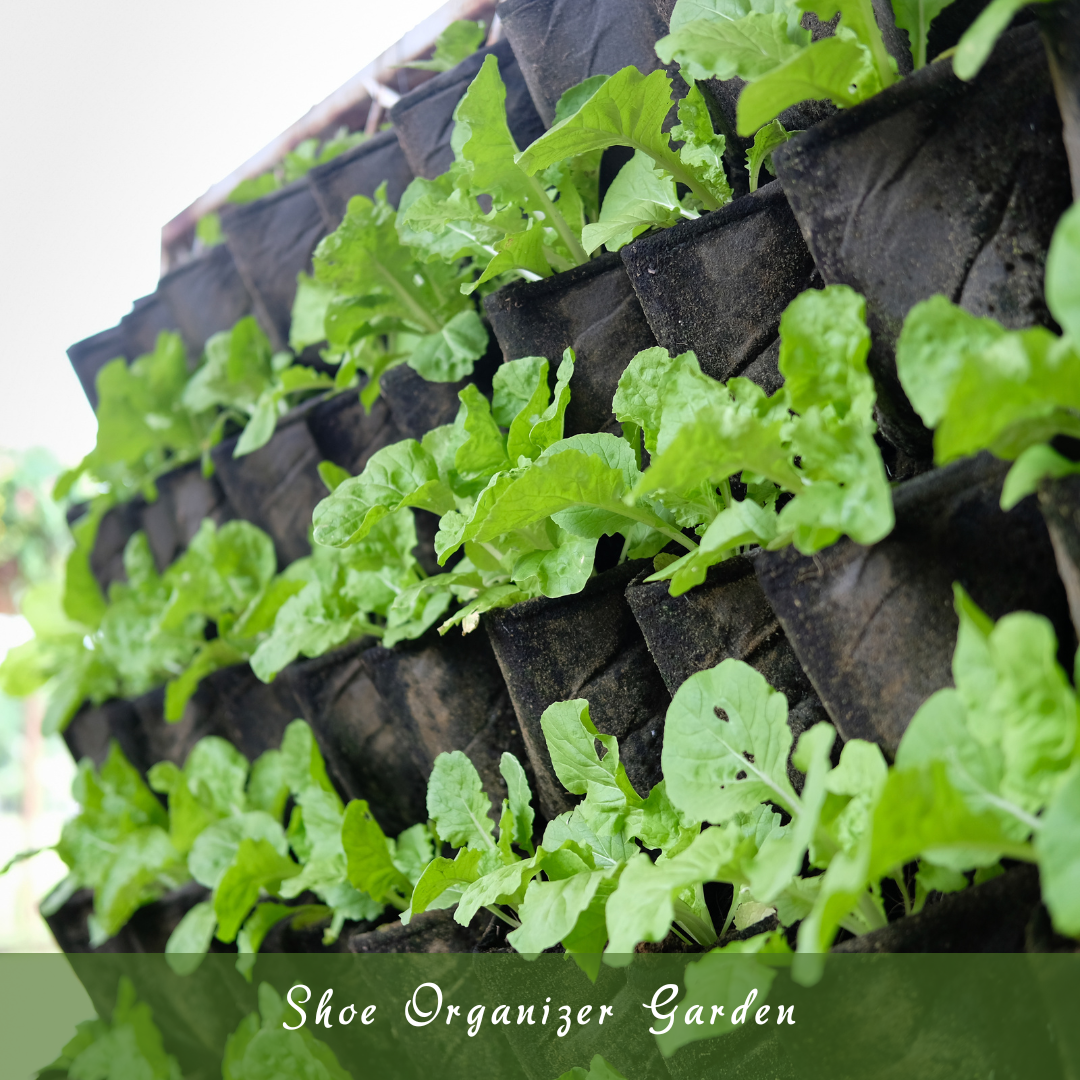
The Right Vegetables For Vertical Gardening
Choosing the right vegetables is key to success when planning a vertical garden. Choosing the right vegetables is crucial for a successful vertical garden for vegetables, as certain crops are better suited for climbing and growing in confined spaces.
Below are some of the best vegetables for vertical gardening, each chosen for their ability to grow upward, maximize space, and yield healthy produce.
1. Tomatoes
Ideal for: Hanging baskets, cages, or trellises
Tomatoes, especially cherry and grape varieties, thrive when grown vertically. They benefit from sturdy supports like cages or trellises that prevent sprawling.
Regular pruning helps airflow, reduces disease risk, and encourages larger yields. In zones 3–11, whole light and well-drained soil are necessary for their best growth.
2. Cucumbers
Ideal for: Trellises or mesh netting
Cucumbers are perfect for vertical gardening, as their vines naturally climb. Using a trellis or mesh netting helps save space, keeps fruit clean, and prevents soil diseases. Bush and vining varieties can both be grown this way. They require full sun and warm temperatures in zones 4–12.
3. Pole Beans
Ideal for: Trellises, poles, or obelisks
Pole beans are one of the best choices for vertical gardening due to their natural climbing tendencies. Plant them near a sturdy trellis or pole for maximum yield and space-saving. Beans proliferate and produce abundantly in warm climates, thriving in zones 3–10 with consistent sunlight.
4. Peas (Snow & Snap)
Ideal for: Trellises, garden netting
Peas are lightweight, and vining plants are ideal for vertical gardening. Their tendrils naturally cling to supports like trellises or garden netting, making them easy to grow upward.
They thrive in cooler weather, growing best in zones 3–9. Peas need moderate sunlight and regular harvesting for a continuous yield.
5. Zucchini (Climbing Varieties)
Ideal for: Strong trellises or arbours
Climbing zucchini varieties can be trained to grow upward on trellises or arbours, improving airflow and preventing pests.
Be sure to support growing fruit with slings to avoid damage. Zucchini grows best in full sun and requires consistent watering, making it ideal for zones 4–10 with ample space.
6. Malabar Spinach
Ideal for: Trellises, fences
Malabar spinach is a heat-loving, fast-growing vine perfect for vertical gardens. It climbs easily and provides a leafy, edible alternative to traditional spinach.
Best grown in warmer climates (zones 7–10), it thrives in well-drained soil and needs consistent watering. Malabar spinach adds greenery and freshness to vertical setups.
7. Pumpkins (Mini Varieties)
Ideal for: Strong trellises or A-frames
Mini pumpkin varieties like ‘Jack Be Little’ are an excellent choice for a vertical garden for vegetables, as they can grow upward on strong trellises while producing small, manageable pumpkins.
They can grow upwards on trellises or A-frames, but their fruits need additional support, like slings, to prevent breakage. Pumpkins require full sun and a long growing season, thriving in zones 4–9 with deep, rich soil.
8. Squash (Acorn or Delicata)
Ideal for: Vertical trellises with slings
Acorn and delicata squash varieties are compact and well-suited for vertical gardens. Train them up a strong trellis and use slings to support the developing fruit.
With frequent watering and a warm growth season, squash plants thrive in zones 3–10 and require full sun and well-drained soil for maximum harvests.
9. Gourds
Ideal for: Arches, trellises, or pergolas
Gourds, primarily decorative varieties, are great for vertical gardening. Their vines climb and spread easily, making them ideal for trellises, arches, or pergolas.
They grow quickly in full sun and require plenty of space to spread. Gourds are well-suited for zones 3–10 and need regular watering during hot seasons.
10. Chillies & Peppers
Ideal for: Hanging baskets or small cages
Compact pepper varieties like Thai chillies or mini bells work well in vertical gardens, especially in hanging baskets or small cages.
Peppers need full sun and consistent moisture. Growing them vertically saves space and improves air circulation, leading to healthier plants. They thrive in zones 4–11 with proper care.
Conclusion
Creating a vertical garden for vegetables is an innovative and stylish way to make the most of small spaces. You can enjoy fresh, homegrown produce without a traditional garden with the right structures, plant choices, and care.
Whether on a balcony or a tiny patio, vertical gardening brings your space beauty, health, and flavour. Start small, stay consistent, and soon you’ll have a thriving vertical oasis full of delicious vegetables at your fingertips.
I trust you enjoyed this article on Create A Stunning Vertical Garden For Vegetables. Please stay tuned for more inspiring guides, helpful tips, and ideas to help you live closer to nature every day.
Take care!
— JeannetteZ
💬 Your Opinion Is Important To Me
Do you have thoughts, ideas, or questions? I’d love to hear from you. Please leave your comments below or email me directly at Jeannette@Close-To-Nature.org.
📚 More Nature-Inspired Reads
Explore more ways to connect with nature, nurture your pets, and live in harmony with the world around you 🌿


